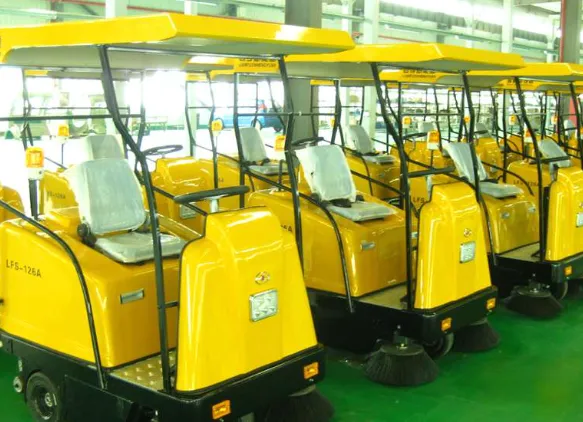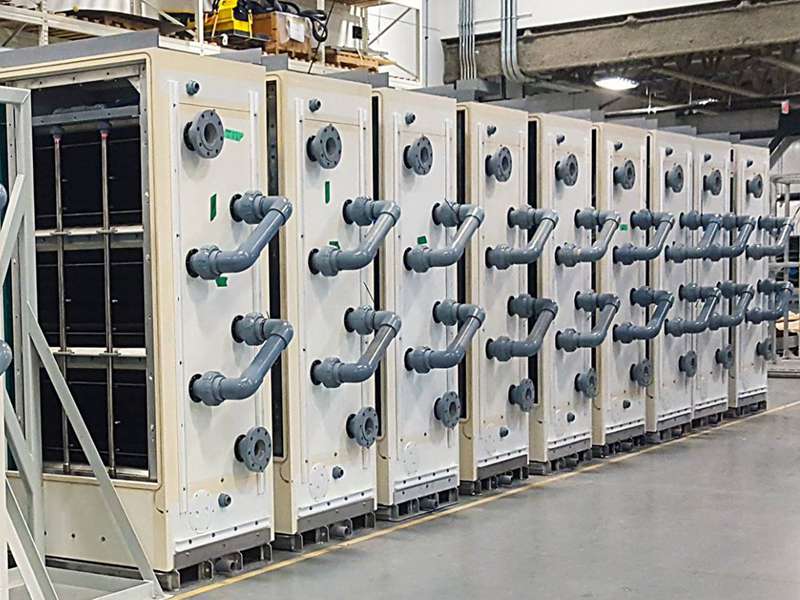
-
 ஆப்பிரிக்க
ஆப்பிரிக்க -
 அல்பேனியன்
அல்பேனியன் -
 அம்ஹாரிக்
அம்ஹாரிக் -
 அரபு
அரபு -
 ஆர்மேனியன்
ஆர்மேனியன் -
 அஜர்பைஜானி
அஜர்பைஜானி -
 பாஸ்க்
பாஸ்க் -
 பெலாரசியன்
பெலாரசியன் -
 பெங்காலி
பெங்காலி -
 போஸ்னியன்
போஸ்னியன் -
 பல்கேரியன்
பல்கேரியன் -
 கற்றலான்
கற்றலான் -
 செபுவானோ
செபுவானோ -
 சீனா
சீனா -
 சீனா (தைவான்)
சீனா (தைவான்) -
 கோர்சிகன்
கோர்சிகன் -
 குரோஷியன்
குரோஷியன் -
 செக்
செக் -
 டேனிஷ்
டேனிஷ் -
 டச்சு
டச்சு -
 ஆங்கிலம்
ஆங்கிலம் -
 எஸ்பெராண்டோ
எஸ்பெராண்டோ -
 எஸ்டோனியன்
எஸ்டோனியன் -
 ஃபின்னிஷ்
ஃபின்னிஷ் -
 பிரெஞ்சு
பிரெஞ்சு -
 ஃப்ரிஷியன்
ஃப்ரிஷியன் -
 காலிசியன்
காலிசியன் -
 ஜார்ஜியன்
ஜார்ஜியன் -
 ஜெர்மன்
ஜெர்மன் -
 கிரேக்கம்
கிரேக்கம் -
 குஜராத்தி
குஜராத்தி -
 ஹைட்டியன் கிரியோல்
ஹைட்டியன் கிரியோல் -
 ஹவுசா
ஹவுசா -
 ஹவாய்
ஹவாய் -
 ஹீப்ரு
ஹீப்ரு -
 இல்லை
இல்லை -
 மியாவ்
மியாவ் -
 ஹங்கேரிய
ஹங்கேரிய -
 ஐஸ்லாந்து
ஐஸ்லாந்து -
 இக்போ
இக்போ -
 இந்தோனேசியன்
இந்தோனேசியன் -
 ஐரிஷ்
ஐரிஷ் -
 இத்தாலிய
இத்தாலிய -
 ஜப்பானியர்
ஜப்பானியர் -
 ஜாவானியர்கள்
ஜாவானியர்கள் -
 கன்னடம்
கன்னடம் -
 கசாக்
கசாக் -
 கெமர்
கெமர் -
 ருவாண்டன்
ருவாண்டன் -
 கொரியன்
கொரியன் -
 குர்திஷ்
குர்திஷ் -
 கிர்கிஸ்
கிர்கிஸ் -
 காசநோய்
காசநோய் -
 லத்தீன்
லத்தீன் -
 லாட்வியன்
லாட்வியன் -
 லிதுவேனியன்
லிதுவேனியன் -
 லக்சம்பர்கிஷ்
லக்சம்பர்கிஷ் -
 மாசிடோனியன்
மாசிடோனியன் -
 மல்காஷி
மல்காஷி -
 மலாய்
மலாய் -
 மலையாளம்
மலையாளம் -
 மால்டிஸ்
மால்டிஸ் -
 மௌரி
மௌரி -
 மராத்தி
மராத்தி -
 மங்கோலியன்
மங்கோலியன் -
 மியான்மர்
மியான்மர் -
 நேபாளி
நேபாளி -
 நார்வேஜியன்
நார்வேஜியன் -
 நார்வேஜியன்
நார்வேஜியன் -
 ஆக்ஸிடன்
ஆக்ஸிடன் -
 பாஷ்டோ
பாஷ்டோ -
 பாரசீக
பாரசீக -
 போலிஷ்
போலிஷ் -
 போர்த்துகீசியம்
போர்த்துகீசியம் -
 பஞ்சாபி
பஞ்சாபி -
 ரோமானியன்
ரோமானியன் -
 ரஷ்யன்
ரஷ்யன் -
 சமோவான்
சமோவான் -
 ஸ்காட்டிஷ் கேலிக்
ஸ்காட்டிஷ் கேலிக் -
 செர்பியன்
செர்பியன் -
 ஆங்கிலம்
ஆங்கிலம் -
 ஷோனா
ஷோனா -
 சிந்தி
சிந்தி -
 சிங்களம்
சிங்களம் -
 ஸ்லோவாக்
ஸ்லோவாக் -
 ஸ்லோவேனியன்
ஸ்லோவேனியன் -
 சோமாலி
சோமாலி -
 ஸ்பானிஷ்
ஸ்பானிஷ் -
 சுண்டனீஸ்
சுண்டனீஸ் -
 சுவாஹிலி
சுவாஹிலி -
 ஸ்வீடிஷ்
ஸ்வீடிஷ் -
 தகலாக்
தகலாக் -
 தாஜிக்
தாஜிக் -
 தமிழ்
தமிழ் -
 டாடர்
டாடர் -
 தெலுங்கு
தெலுங்கு -
 தாய்
தாய் -
 துருக்கிய
துருக்கிய -
 துர்க்மென்
துர்க்மென் -
 உக்ரைனியன்
உக்ரைனியன் -
 உருது
உருது -
 உய்குர்
உய்குர் -
 உஸ்பெக்
உஸ்பெக் -
 வியட்நாமியர்
வியட்நாமியர் -
 வெல்ஷ்
வெல்ஷ் -
 உதவி
உதவி -
 இத்திஷ்
இத்திஷ் -
 யாருப்பா
யாருப்பா -
 ஜூலு
ஜூலு
FRP Boat Body Design for Rough Water Stability
For over 15 years, Hengshui Jrain Frp Co., Ltd. has stood at the forefront of composite manufacturing. Located in Hengshui City, China, this professional entity has consistently manufactured a diverse array of fiberglass reinforced plastic (FRP) products since its establishment in 2008. Driven by a commitment to continuous improvement, Jrain FRP actively refines its product lines, manufacturing processes, and market development strategies. This dedication is particularly evident in their expertise concerning FRP Boat Body design, where achieving stability in challenging sea conditions is paramount. The inherent advantages of FRP make it an exceptional material for marine applications, especially when navigating rough waters demands superior hull integrity and performance.

Designing the FRP Boat Body for Rough Water Performance
Achieving stability in rough water involves far more than just selecting FRP; it requires meticulous design focused on hydrodynamics and structural resilience. Key design elements include:
- Hull Form:Deep-V hulls with pronounced deadrise angles are renowned for their ability to cut through waves, providing a smoother ride and reducing slamming impacts. Modifications like reverse chines or spray rails help deflect water outward, improving stability and keeping the deck drier. The planning surface must be carefully designed for efficient lift and control at speed.
- Weight Distribution & Center of Gravity (CG):Precise placement of heavy components (engines, fuel tanks, batteries) low and centrally within the FRP Boat Body is critical. A low CG directly improves both initial and ultimate stability (resistance to capsizing). The lightweight nature of FRP itself facilitates achieving a favorable CG.
- Beam and Flare:Adequate beam provides inherent form stability. Flared hull sides increase buoyancy as the boat heels, generating a righting moment that counteracts rolling. This flare must be integrated smoothly into the FRP Boat Body
- Structural Reinforcement:Strategic reinforcement using techniques like encapsulated foam cores (e.g., balsa, PVC foam) or additional layers of fiberglass mat and woven roving in high-stress areas (keel, chines, transom, bulkhead connections) significantly increases the hull's stiffness and impact resistance. This prevents hull flexing ("oil canning") which can destabilize the boat and lead to fatigue failure. Jrain FRP leverages its material expertise to optimize these laminates.
- Seakeeping Features:Features like trim tabs or interceptors allow dynamic adjustment of running attitude for optimal stability and comfort in varying conditions. Well-designed spray curtains or high coamings enhance safety by keeping water off the deck.
Jrain FRP's manufacturing capabilities ensure these complex designs are translated into robust, high-quality FRP Boat Body structures consistently and at scale.
Advantages of FRP Car Body and GRP Car Body Applications
While marine applications highlight FRP's prowess in harsh environments, its benefits translate powerfully to the transportation sector. FRP Car Body and GRP Car Body components are increasingly popular, particularly for specialized vehicles, recreational vehicles (RVs), commercial truck bodies, buses, and niche automotive applications. The drivers for adoption mirror those in marine:
- Lightweighting:Significantly reducing vehicle weight directly improves fuel efficiency, payload capacity, and handling dynamics. This is a major advantage for FRP Car Body designs in logistics and performance vehicles.
- Corrosion & Rust Resistance:Unlike metals, GRP Car Body parts are immune to rust and highly resistant to chemicals and environmental degradation, ensuring longevity and reduced maintenance, especially in harsh operating conditions or climates.
- Design Freedom & Aesthetics:FRP allows for complex, aerodynamic, and highly attractive shapes that are difficult or expensive to achieve with metal. It offers smooth, paintable surfaces available in a wide range of colors and finishes, contributing to a fashionable and attractive appearance.
- Durability and Safety:FRP Car Body components exhibit high strength and good impact resistance, contributing to vehicle safety. Their low thermal conductivity also provides inherent insulation
- Part Consolidation:Large, complex shapes can be molded as single pieces, reducing assembly time and potential leak points.
Key Properties of Jrain FRP for Car and Boat Bodies
|
Feature |
Benefit for Car/Boat Bodies |
|
அரிப்பு எதிர்ப்பு |
Resists saltwater, chemicals, rust; ideal for marine (FRP Boat Body) and industrial use. |
|
Long Service Life |
Durable material lessens maintenance frequency and lowers lifetime costs significantly. |
|
Fashionable Appearance |
Smooth, paintable surfaces allow for attractive, modern designs. |
|
Light Weight |
40-80% lighter than steel; improves fuel efficiency (car) and stability/performance (boat). |
|
உயர் வலிமை |
Provides structural integrity and high safety factor under load. |
|
Low Thermal Conductivity |
Offers inherent insulation properties (thermal & electrical). |
|
Smooth & Colorful |
Excellent surface finish; available in wide color ranges. |
|
Design Flexibility |
Can be optimized via material selection (resins, fibers, cores) and laminate design. |
|
UV Protection |
External resin coatings with UV inhibitors prevent degradation and yellowing. |
Because of these compelling advantages, fiberglass car and boat bodies have become highly sought-after products across numerous industries. Beyond transportation and marine (yachts, fishing boats), FRP finds extensive use in building facades, electronics enclosures, specialty vehicles, and even detailed toy cars. Furthermore, the global rise in environmental protection awareness has led to widespread restrictions on tree cutting. This trend has significantly boosted the fiberglass boats manufacturing sector, as FRP stands as the ideal, sustainable material for constructing durable and high-performance small to medium-sized watercraft, effectively replacing traditional wood.
FAQs about FRP Boat Body
What are the primary advantages of an FRP Boat Body for rough water?
The primary advantages include superior strength-to-weight ratio (enhancing stability by allowing a lower center of gravity), excellent corrosion resistance against saltwater, design flexibility to optimize hull shapes (like deep-Vs) and reinforcement patterns for stiffness, and impact resistance to handle wave pounding, all while requiring less maintenance than traditional materials.
How does the weight of an FRP Boat Body compare to steel or aluminum, and why does it matter?
An FRP Boat Body is typically 40-80% lighter than an equivalent steel structure and often lighter than aluminum too. This dramatic weight reduction is crucial for stability, as it allows designers to place weight lower in the hull, lowering the center of gravity and making the boat more resistant to rolling. It also improves fuel efficiency and performance.
Can a GRP Car Body be as strong and safe as a metal one?
Yes, when properly engineered and manufactured, a GRP Car Body component can offer high strength and a high safety factor. The material's impact resistance and ability to be designed with specific reinforcement in critical areas contribute to overall vehicle safety and durability, especially for specialized applications.
Is the appearance of an FRP Car Body durable and customizable?
Absolutely. FRP Car Body parts offer a smooth surface that is readily paintable and can be produced in virtually any colorful finish. The material itself is durable, and finishes are protected by external resin coatings containing paraffin and ultraviolet absorbers, ensuring long-lasting fashionable and attractive appearance and resistance to fading or degradation.
What kind of maintenance does an FRP Boat Body require?
One of the major benefits of an FRP Boat Body is its long service life and significantly less maintenance compared to wood or metal. Routine cleaning and periodic inspection for gelcoat cracks or damage are key. The inherent corrosion resistance and rust resistance eliminate the need for anti-corrosion treatments typical of metal hulls. Repairs, when needed, are generally straightforward.
Designing boat bodies for stability in rough water is a complex challenge demanding the right material and expert engineering. Fiberglass Reinforced Plastic (FRP), or GRP, emerges as the superior solution, offering an unmatched blend of lightweight construction, high strength, corrosion immunity, and unparalleled design flexibility. Companies like Hengshui Jrain Frp Co., Ltd., with over 15 years of dedicated manufacturing experience and continuous improvement in FRP processes, are instrumental in bringing these advanced, stable hull designs to life. By leveraging FRP's properties – from optimizing hull forms and weight distribution to implementing strategic reinforcement – Jrain FRP enables the production of robust, safe, and high-performing FRP Boat Body structures capable of confidently handling demanding sea conditions. The same material advantages also drive the growing adoption of FRP Car Body and GRP Car Body components across diverse transportation sectors, highlighting FRP's versatility and enduring value as a modern engineering material.
சமீபத்திய செய்திகள்
-
Fiberglass Duct Our Commitment to Quality719செய்திAug.22,2025
-
Fiberglass Duct Our Commitment to Qualityசெய்திAug.20,2025
-
FRP Winding Machine with Precision Windingசெய்திAug.20,2025
-
Fiberglass Walkway Grating with Easy Installationசெய்திAug.20,2025
-
Rectangular Fiberglass Tanks for Industrial Storageசெய்திAug.20,2025
-
FRP Piping System in Industrial Water Distributionசெய்திAug.20,2025









